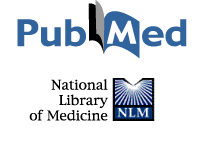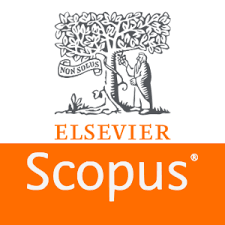ROLE OF PREEMPTIVE NALBUPHINE IN REDUCING THE USE OF POSTOPERATIVE ANALGESICS FOR PAIN AND TRISMUS AFTER SURGICAL EXTRACTION OF IMPACTED MANDIBULAR THIRD MOLAR
DOI:
https://doi.org/10.55519/JAMC-01-12971Keywords:
analgesics, visual analog scale, maximum mouth opening, third molarAbstract
Background: To underscore the significance of risk mitigation strategies associated with the surgical extraction of impacted mandibular third molar, a comprehensive understanding of postoperative complications is essential. Such primary complications include the possibilities of postoperative pain, trismus, infection, nerve injury, excessive hemorrhage, delayed healing and inadvertent damage to neighboring structures. This study investigates the impact of preemptive intravenous nalbuphine administration on postoperative pain and trismus management following surgical extraction of impacted mandibular third molars. Methods: A total of 310 patients were divided into two groups, with Group I (n=156) receiving nalbuphine and Group II (n=154) receiving a placebo. Postoperative pain scores (on visual analog scale), analgesic usage, and maximum mouth opening (MMO) were evaluated. Results: The patients aged 15-40 year in both groups, with mean = 27.2±7.0 and 28.1±8.3 years for Group I and II, respectively (p>0.05). The mean postoperative pain in Group II was significantly higher (p<0.0001) than Group I, with pain score restricted to 2–6 in group I, compared to 2–10 in Group II. Patients in Group II consumed the postoperative analgesics for significantly longer duration (p<0.0001) than patients in Group I. The MMO data showed that the number of patients with mouth opening less than 30 cm was significantly smaller (p<0.0001) in Group I as compared to Group II (i.e., 42 versus 114). Conclusions: These results underscore the therapeutic potential of preemptive nalbuphine in enhancing patient comfort and recovery after impacted mandibular third molar extraction, providing a valuable framework for optimizing patient outcomes.
References
1. Benediktsdóttir IS, Wenzel A, Petersen JK, Hintze H. Mandibular third molar removal: Risk indicators for extended operation time, postoperative pain, and complications. Oral Surg Oral Med Oral Pathol Oral Radiol Endod 2004;97(4):438–46.
2. Mattos-Pereira GH, Martins CC, Esteves-Lima RP, Alvarenga-Brant R, Cota LOM, Costa FO. Preemptive analgesia in dental implant surgery: A systematic review and meta-analysis of randomized controlled trials. Med Oral Patol Oral Cir Bucal 2021;26(5):e632–41.
3. Pimenta RP, Takahashi CM, Barberato-Filho S, McClung DCF, Moraes F da S, de Souza IM, et al. Preemptive use of anti-inflammatories and analgesics in oral surgery: a review of systematic reviews. Front Pharmacol 2023;14:1303382.
4. Jannuzzi RG. Nalbuphine for treatment of opioid-induced pruritus: a systematic review of literature. Clin J Pain 2016;32(1):87–93.
5. Sun Z, Zhu Z, Yang G, Zheng H. The 95% effective dose of nalbuphine in patient-controlled intravenous analgesia for patients undergoing laparoscopic total hysterectomy compared to equivalent sufentanil. Medicine (Baltimore). 2020;99(22):e20424.
6. Kay B, Lindsay RG, Mason CJ, Healy TEJ. Oral Nalbuphine for the treatment of pain after dental extractions. Br J Anaesth 1988;61(3):313–7.
7. Yaksh TL. Pharmacology and mechanisms of opioid analgesic activity. Acta Anaesthesiol Scand 1997;41(1 II):94–111.
8. Machelska H, Celik M. Advances in achieving opioid analgesia without side effects. Front Pharmacol 2018;9:1388.
9. McCartney CJL, Sinha A, Katz J. A qualitative systematic review of the role of n-methyl-d-aspartate receptor antagonists in preventive analgesia. Anesth Analg 2004;98(5):1385–400.
10. Betancourt JW, Kupp LI, Jasper SJ, Farooqi OA. Efficacy of Ibuprofen-Hydrocodone for the Treatment of Postoperative Pain After Periodontal Surgery. J Periodontol 2004;75(6):872–6.
11. Barden J, Edwards JE, McQuay HJ, Wiffen PJ, Moore RA. Relative efficacy of oral analgesics after third molar extraction. Br Dent J 2004;197(7):407–11.
12. Cristalli MP, LaMonaca G, De Angelis C, Pranno N, Annibali S. Efficacy of preoperative administration of paracetamol-codeine on pain following impacted mandibular third molar surgery: A randomized, split-mouth, placebo-controlled, double-blind clinical trial. Pain Res Manag 2017;2017:9246352.
13. Au AHY, Choi SW, Cheung CW, Leung YY. The efficacy and clinical safety of various analgesic combinations for post-operative pain after third molar surgery: A systematic review and meta-analysis. PLoS One 2015;10(6):e0127611.
14. Garcia Garcia A, Gude Sampedro F, Gandara Rey J, Gallas Torreira M. Trismus and pain after removal of impacted lower third molars. J Oral Maxillofac Surg 1997;55(11):1223–6.
15. Blondeau F, Daniel NG. Extraction of impacted mandibular third molars: Postoperative complications and their risk factors. J Can Dent Assoc 2007;73(4):325.
16. Balakrishnan G, Narendar R, Kavin T, Venkataraman S, Gokulanathan S. Incidence of trismus in transalveolar extraction of lower third molar. J Pharm BioAllied Sci 2017;9(Suppl):S222–7.
17. Xie Q, Wei S, Zhou N, Huang X. Modified envelope flap, a novel incision design, can relieve complications after extraction of fully horizontal impacted mandibular third molar. J Dent Sci 2021;16(2):718–22.
18. Pedersen A. Interrelation of complaints after removal of impacted mandibular third molars. Int J Oral Surg 1985;14(3):241–4.
19. Peñarrocha-Diago M, Sanchis JM, Sáez U, Gay C, Bagán JV. Oral hygiene and postoperative pain after mandibular third molar surgery. Oral Surg Oral Med Oral Pathol Oral Radiol Endod 2001;92(3):260–4.
Downloads
Published
How to Cite
Issue
Section
License
Copyright (c) 2025 Yasir Rehman Khattak, Muammar Qazafi, Mehtab Islam, Anjum Iqbal, Jawad Ullah Khattak, Khadim Shah, Muhammad Mushtaq

This work is licensed under a Creative Commons Attribution-NoDerivatives 4.0 International License.
Journal of Ayub Medical College, Abbottabad is an OPEN ACCESS JOURNAL which means that all content is FREELY available without charge to all users whether registered with the journal or not. The work published by J Ayub Med Coll Abbottabad is licensed and distributed under the creative commons License CC BY ND Attribution-NoDerivs. Material printed in this journal is OPEN to access, and are FREE for use in academic and research work with proper citation. J Ayub Med Coll Abbottabad accepts only original material for publication with the understanding that except for abstracts, no part of the data has been published or will be submitted for publication elsewhere before appearing in J Ayub Med Coll Abbottabad. The Editorial Board of J Ayub Med Coll Abbottabad makes every effort to ensure the accuracy and authenticity of material printed in J Ayub Med Coll Abbottabad. However, conclusions and statements expressed are views of the authors and do not reflect the opinion/policy of J Ayub Med Coll Abbottabad or the Editorial Board.
USERS are allowed to read, download, copy, distribute, print, search, or link to the full texts of the articles, or use them for any other lawful purpose, without asking prior permission from the publisher or the author. This is in accordance with the BOAI definition of open access.
AUTHORS retain the rights of free downloading/unlimited e-print of full text and sharing/disseminating the article without any restriction, by any means including twitter, scholarly collaboration networks such as ResearchGate, Academia.eu, and social media sites such as Twitter, LinkedIn, Google Scholar and any other professional or academic networking site.










